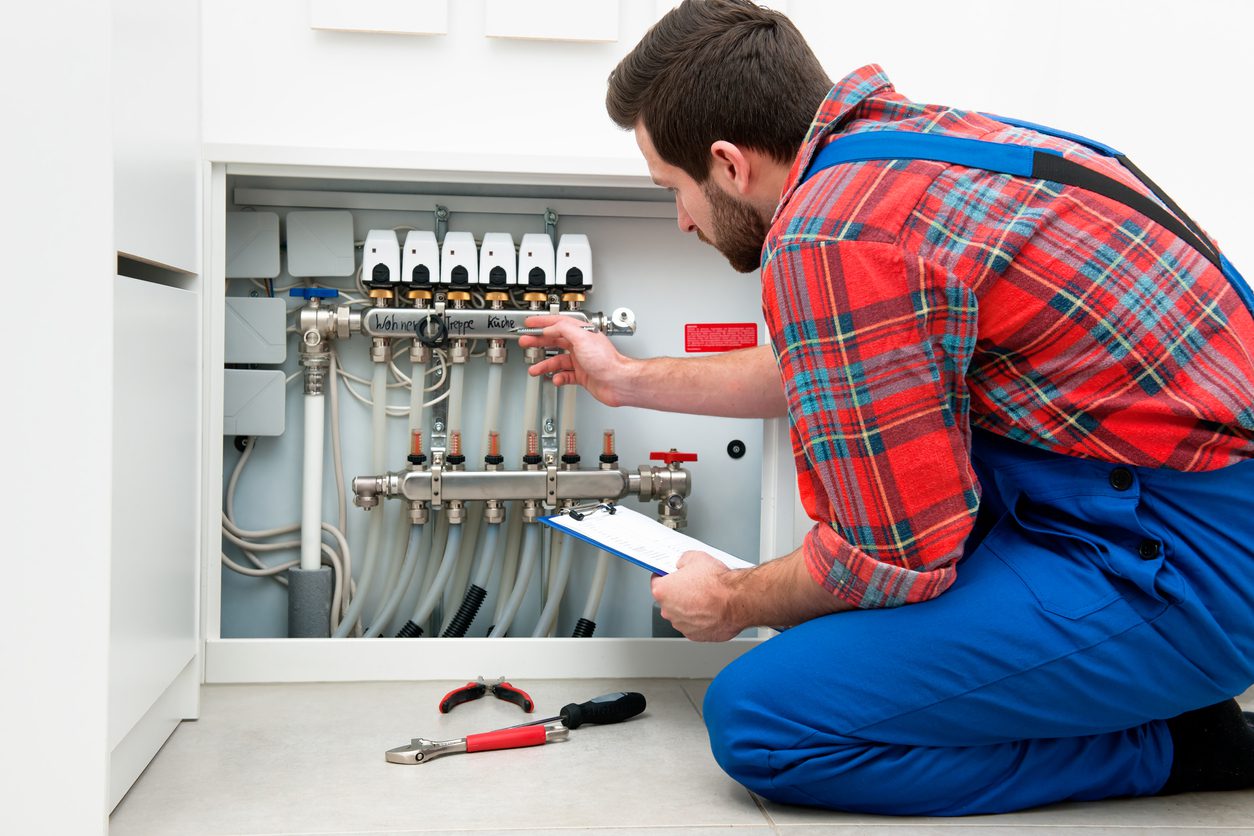As the air turns crisp and the first signs of fall appear, your home’s furnace becomes more than just a convenience; it’s the heart of your comfort. Nobody wants to wake up on a chilly morning only to find their heating system has stopped working. A well-maintained furnace not only keeps your home warm but also saves you from unexpected repair costs and energy bills that suddenly spike.
Taking the time for a fall furnace tune-up ensures that minor issues are identified and addressed before they escalate into more significant, and potentially more expensive, problems. It also gives you peace of mind knowing your family is safe from potential hazards, such as carbon monoxide leaks or malfunctioning parts. Regular maintenance keeps your furnace running efficiently and extends its lifespan, so you don’t have to worry about sudden breakdowns in the middle of winter. By connecting with the Furnace Services Provider in Kitchener, you can schedule a reliable fall tune-up that keeps your system running smoothly, protects your family’s comfort, and helps you avoid costly breakdowns when you need heat the most.
In this blog, we will explore a complete fall furnace tune-up checklist to help you avoid breakdowns before they start.
Why a Fall Furnace Tune-Up is Necessary
A fall furnace tune-up is more than just a routine task—it’s an essential step to keep your home warm, safe, and energy-efficient throughout the colder months. Skipping maintenance can lead to unexpected breakdowns, higher repair costs, and even safety risks. By scheduling a tune-up before the season starts, you provide your furnace with the care it needs to operate reliably when you need it most.
Here’s why a fall furnace tune-up is necessary:
- Prevent Unexpected Breakdowns: Regular checks catch minor problems before they turn into costly repairs.
- Improve Energy Efficiency: A clean, well-maintained furnace uses less energy, resulting in lower heating bills.
- Extend Furnace Lifespan: Routine maintenance reduces wear and tear, helping your system last longer.
- Ensure Safety: Inspections can detect carbon monoxide leaks or other hazards before they become dangerous.
Taking a little time now can save frustration, money, and stress during the cold winter months.
6 Signs Your Furnace Needs Immediate Attention
Even with regular maintenance, furnaces can develop issues that need immediate attention. Recognizing the signs early can save you from costly repairs, unexpected breakdowns, and uncomfortable cold nights. Paying attention to how your furnace behaves can help you take action before a small problem becomes a major one.
Here are common signs your furnace needs professional help right away:
- Unusual Noises: Banging, rattling, or squealing sounds can indicate loose parts, worn-out components, or airflow problems.
- Inconsistent Heating: Rooms that stay cold or uneven heating may mean duct issues or a failing furnace.
- Frequent Cycling: If the furnace turns on and off rapidly, it may be a sign of a malfunctioning thermostat or airflow issue.
- Yellow or Flickering Pilot Light: A healthy flame should be steady and blue. Yellow flames may indicate improper combustion.
- Rising Energy Bills: A sudden spike in heating costs can mean your furnace is working harder than it should
- Gas Smell or Carbon Monoxide Alarm: A gas leak or carbon monoxide is dangerous. Turn off the furnace right away and call a professional for help.
Recognizing these warning signs early ensures your furnace remains safe, efficient, and reliable throughout the fall.
Complete Fall Furnace Tune-Up Checklist
A fall furnace tune-up doesn’t have to feel overwhelming. Breaking it down into clear steps makes it simple, and each one plays a role in keeping your system safe, efficient, and ready for the cold months ahead. Below is a complete checklist with practical explanations to guide you through the process.
1.Inspect The Furnace Exterior
Start by giving the outside of your furnace a good look. Inspect for visible issues such as rust, cracks, or soot marks. These are early warning signs of wear or possible leaks. If you notice anything unusual, such as staining or corrosion, don’t ignore it, as it may indicate a more significant issue within. Even making sure the furnace panels are closed tightly can improve safety and efficiency.
2.Vacuum Dust and Dirt From The Furnace
Dust is one of the most common reasons furnaces lose efficiency. Use a vacuum with a soft brush attachment to carefully clean the area around burners, the blower compartment, and any open surfaces inside the furnace. Be gentle when working around wires or delicate parts. A clean furnace not only heats more efficiently, but it also improves the air quality inside your home.
3.Replace or Clean The Furnace Filter
The filter is one of the most essential parts of your furnace system, yet it’s often overlooked. A clogged filter forces the furnace to work harder, which increases your energy bills and shortens the lifespan of the system. Disposable filters should be replaced every 1–3 months, while reusable ones require regular washing. Keeping a spare filter on hand makes this task quick and stress-free.
4.Inspect The Thermostat
Sometimes heating problems aren’t caused by the furnace itself but by the thermostat. Test your thermostat by setting the temperature a few degrees higher and see if the furnace responds promptly. If the readings don’t match the room temperature or the system struggles to turn on, it might be time to recalibrate or replace the thermostat. Upgrading to a programmable or smart thermostat can also help you save on energy costs.
5.Inspect The Heat Exchanger
The heat exchanger is one of the most critical and delicate components of your furnace. It transfers heat while keeping dangerous gases, such as carbon monoxide, from entering your home. Look for cracks, corrosion, or unusual marks. Because a damaged heat exchanger can be a serious safety hazard, call a professional immediately if you spot signs of trouble. This isn’t a part to take chances with.
6.Test The Pilot Light or Ignition System
For gas furnaces, the pilot light or electronic ignition system must be in good working condition for reliable heating. A steady blue flame is what you want to see; it shows clean and efficient combustion. If the flame is yellow, flickering, or goes out often, it could mean dirty burners or a bigger combustion issue. Modern systems with electronic ignitions should spark consistently without delay. Any irregularity here is a signal to get it checked.
7.Verify Even Heat Distribution Throughout All Rooms
Turn on the furnace and walk through your home. Ensure that warm air is distributed evenly to each room. Cold spots could indicate leaks or blockages in the ductwork, or it may be an issue with the furnace’s airflow control. Don’t assume uneven heating is standard; minor fixes, such as sealing duct gaps or adjusting vents, can make a significant difference.
8.Monitor Energy Bills for Unusual Spikes During Use
One of the simplest ways to identify furnace trouble is by reviewing your utility bill. If your energy use suddenly jumps without a clear reason, it’s a sign your furnace is working harder than it should. This can occur due to dirty filters, duct leaks, or worn parts. Comparing your bill to the same period last year can help you catch inefficiencies early.
9.Schedule A Professional Inspection
While many tune-up tasks can be done yourself, nothing replaces a professional inspection. A licensed HVAC technician can check areas you can’t easily access, test combustion levels, and ensure all parts are working safely. Even if your furnace appears to be functioning correctly, an annual inspection can help prevent costly breakdowns and extend the life of your system.
Think of it as a small investment that saves you from bigger expenses down the road, and by booking a professional Furnace Inspection with Brantford team, you can be sure your system is safe, efficient, and ready for the season ahead
Together, these steps create a complete tune-up routine that keeps your furnace reliable, safe, and efficient. Doing your part at home and combining it with a professional check gives you the best of both worlds: peace of mind and a warm, comfortable home all winter long.
Final Words
A fall furnace tune-up is one of those simple steps that can save you from much stress once the cold weather sets in. By checking the basics, such as filters, thermostats, heat exchangers, and airflow, you not only ensure your home stays warm but also avoid sudden breakdowns and high repair costs. Regular care keeps your furnace running safely, efficiently, and for many more years to come. Taking a little time now and scheduling a yearly professional inspection, means you can head into winter with confidence and comfort.





























